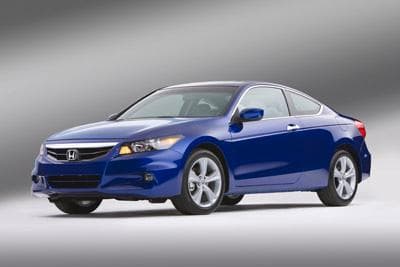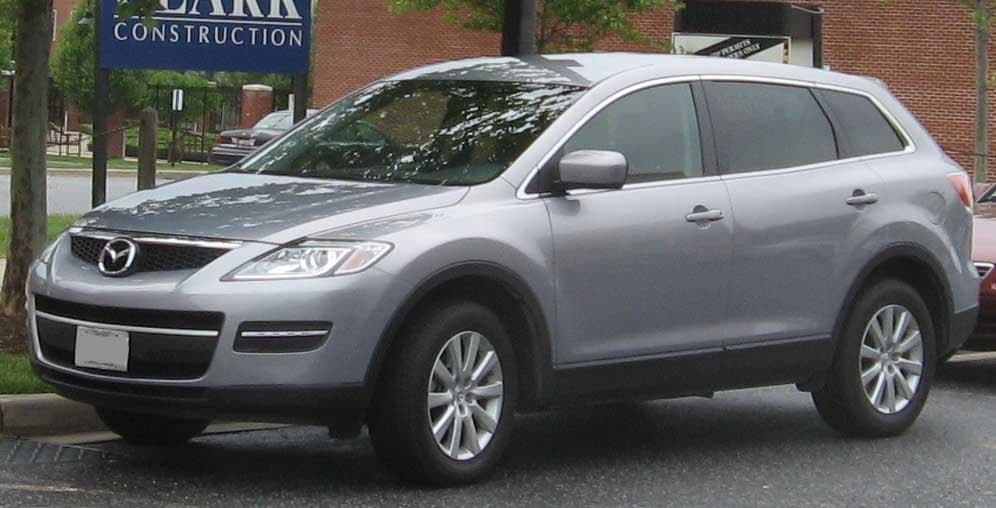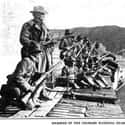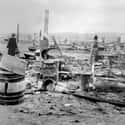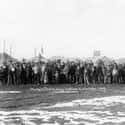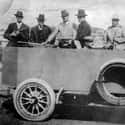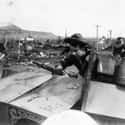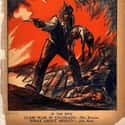-
(#1) The National Guard And Striking Miners Engaged In A Deadly Firefight At Ludlow
On April 20, 1914, national guardsmen entered the Ludlow tent colony to speak to one of the unofficial leaders of the striking miners, Louis Tikas. They had heard that a man was being kept at Ludlow against his will, but Tikas denied it.
Following the conversation, a National Guard officer ordered a machine gun set up on the hill overlooking the camp. Strikers from the camp saw the troop movement and took up their own rifles in response. The strikers then heard three explosions, which the National Guard later claimed to be a signal for reinforcements.
Shots were fired, though history is unclear on who shot first, and a firefight broke out that lasted throughout the day. Women and children ran for cover. Over the course of the day, one guardsman, one bystander, and several of the strikers were killed in the gunfight. An 11-year-old boy in the camp was killed when he emerged from his hiding spot.
After hours of exchanging shots, a member of the National Guard set fire to the tent colony.
-
(#2) The National Guard Set Fire To The Camp, Killing Women And Children In Hiding
As the firefight died down, a member of the Colorado National Guard set fire to the Ludlow tent colony. Unbeknownst to the guardsmen, four women and 11 children had sought shelter in a cellar-like pit beneath an infirmary. As the tent colony burned, the women and children in the pit were slowly overwhelmed by smoke and suffocated.
One survivor recalled:
The tent over us caught fire and blazed up big and the smoke commenced to come down on top of us. The bigger children tried to climb up out of the cellar, and they took hold of the burning floor, and their little fingers were burned and they fell back on top of us.
Two of the women survived the fire, and all 11 children died.
-
(#3) Armed Strikers Were Rounded Up And Shot
After the National Guard entered the Ludlow camp, they captured three strikers, including Louis Tikas, the unofficial leader of the colony. They were brought before Karl Linderfelt, the leader of the Colorado National Guard stationed at Ludlow. Linderfelt broke his rifle over Tikas' head, striking him hard enough to expose his skull.
Although the accusation was never proven, a sergeant testified under oath that Linderfelt then ordered the execution of Tikas. Some historians believe the militia told the three strikers to run before shooting them in the back. In the end, the three captured strikers were killed, and their bodies were left in the open for three days.
-
(#4) The Strike Claimed Lives On Both Sides
The Ludlow miners formed a volunteer militia made up of those who survived the fire. For 10 days after the Ludlow Massacre, surviving strikers went on a vengeful crusade through southern Colorado using "Remember Ludlow" as a rallying cry. The result was the destruction of half a dozen mines and the deaths of mine officials, strikebreakers, guardsmen, and other people allied with the mining companies. By the time the miners conceded to the federal government, the miners' strike in Colorado had resulted in a total of 75 deaths from both sides of the conflict.
-
(#5) The Working Conditions In The Mines Were Dangerous
Coal mining in the early 1900s was dangerous and often deadly work. Some miners were killed in explosions, but deaths more commonly caused by falling rocks and poisonous gasses. In Colorado, mining deaths were twice the national average, partly because the mine inspector's office was too understaffed to enforce proper mine safety.
The miners were also only paid based on the tonnage of coal they produced, which meant that essential work like shoring up roofs to prevent collapse was unpaid and often neglected. The safety issues were just the beginning of the miners' grievances, as they also complained of low pay, unregulated hours, and corrupt management practices on the part of the mining companies.
-
(#6) John D. Rockefeller, Jr. Was Extremely Anti-Union
Mining company owner John D. Rockefeller, Jr. was staunchly anti-union, which made him a dangerous opponent for the union members who had organized the strike. In an appearance before Congress after the strike begain in 1913, Rockefeller misrepresented the workers' case by claiming that the miners were being manipulated by agitators in the union. He claimed that his company was fighting for the workers' freedom, saying he did not want to allow "outside people to come in and interfere with employees who are thoroughly satisfied with their labor conditions."
When the chairman of the congressional committee asked Rockefeller if he would stand by his anti-union stance even "if it costs all your property and kills all your employees." Rockefeller responded, "It is a great principle." Even after the massacre, Rockefeller and his company tried to spin the story of the strike as an uprising by radicals and immigrant anarchists.
-
(#7) Miners Were Controlled Almost Entirely By The Mining Companies
In addition to the working conditions of the mines, the Colorado coal miners were also controlled by the mining companies in almost every aspect of their daily lives. The miners lived in company-owned housing that were little more than overpopulated shacks and often had no running water. The company towns enforced curfews, and they were patrolled by armed company guards.
Between their infrequent paychecks, the miners were paid in scrips that could only be used at the company store, sometimes going into debt to the store to just make ends meet. Their coal was weighed by the company to determine their pay, and many of the miners believed the system to be rigged against them.
Beyond the company towns, the miners still had no political power to create change. Everything was in the hands of the mining companies. Historian Scott Martelle wrote:
They did not have a political voice. The courts and the local political structure in the south [of Colorado] were directly controlled by, or friendly to, the interests of mine owners. In elections, local mine superintendents often cast their workers’ ballots for them while excluding outsiders from the polls, clinching political control.
As the United Mine Workers started to organize in the area in 1913, Rockefeller's company tried to offer concessions like eight-hour workdays, abolishing scrip, allowing someone to check the company's coal weighing, and paying every two weeks. However, most of these concessions were already required under Colorado law. The company had chosen not to follow these labor laws before that point.
-
(#8) The Mining Companies Evicted And Terrorized The Miners
Since the strikers lived in the company housing, the miners and their families were evicted from their homes once the strike began. After kicking them from their homes, company guards would arrest the newly homeless strikers for vagrancy. In place of their regular homes, strikers set up a tent colony around Ludlow.
As the strike continued, Rockefeller hired private detectives to terrorize the striking miners. To scare the strikers, they raided the camps and fired at random into the miners' tents. Miners and their families were injured and sometimes killed by these attacks, so they started digging pits under their tents to hide in at night. The detectives imported a machine gun and mounted it on an armored car, creating a vehicle the strikers nicknamed "the Death Special." The Death Special roamed the coalfields to further intimidate the miners.
-
(#9) Rockefeller Publicly Defended The Massacre
Months after the massacre, John D. Rockefeller, Jr. released a statement that defended the actions of the Colorado National Guard and proclaimed them innocent of any wrongdoing. Rockefeller stated:
"There was no Ludlow massacre. The engagement started as a desperate fight for life by two small squads of militia... against the entire tent colony, which attacked them with over three hundred armed men."
He also tried to explain how the deaths of the women and children who died in the burning of Ludlow were really the fault of the strikers and victims. He blamed the deaths on poor ventilation and overcrowding, absolving the National Guard, or as he called them, "the defenders of law and property, who were in no slightest way responsible for it."
-
(#10) The Strikers Were Poorly Armed Compared To The National Guard
Despite accusations that the strikers posed a significant threat to the National Guardsmen, an archeological investigation conducted at the location of the Ludlow tent colony found that the strikers' weapons were likely no match for the National Guard. Archeologists found bullets and spent cartridges that revealed the type of weapons each side possessed.
The miners were mainly armed with hunting shotguns, while the National Guardsmen were armed with machine guns and high-powered rifles. The strikers' weapons were hardly effective in comparison to the guardsmen, which casts doubt on Rockefeller's claims that the strikers overwhelmed the National Guard.
-
(#11) The Union Lost The Strike
Despite the attention the Ludlow Massacre brought to the strikers' situation, the union ultimately lost the strike. The United Mine Workers of America exhausted their finances and had to give up the strike in December of 1914. Rockefeller launched a public relations campaign to spin the story in his favor. He started a company union to address the miners' grievances, a poor consolation prize for the strikers.
While very little changed in the immediate aftermath of the massacre, the conversation about Ludlow continued. Congress convened to talk about the events of Ludlow and to consider limiting the martial power that private companies were able to wield.
-
(#12) The Outcry After The Massacre Ushered In Labor Reform
Although the strikers and the union did not win the strike, the public attention and outcry over the tragedy at Ludlow did usher in better labor laws and more peaceful strikes. The violence at Ludlow prompted companies to turn away from their policy of direct confrontation with the strikers. Instead, they began to favor negotiated settlements over strikes.
In the following decades, stricter labor laws were adopted and enforced, and support for unions grew to its peak in the 1930s. Ludlow is considered a watershed moment in the labor movement, and the site is now maintained as a monument to the American labor struggle.
New Random Displays Display All By Ranking
About This Tool
On April 20, 1914, many striking miners attacked the guards of the Colorado National Guard and the Colorado Fuel and Steel Company in Ludlow, Colorado. This was the beginning of the Ludlow massacre. The massacre resulted in 25 people dead, including 11 children. Most of the coal miners who went on strike belonged to the Colorado Coal and Iron Company, a subsidiary of Rockefeller.
Rockefeller is the American wealthy family that has continued to this day, the first generation of American oil monopoly company, at this time, operating Colorado's largest coal mining company. The Ludlow massacre has proved the dark side of the Rockefeller family, the random tool introduced 12 details about this bloody conflict.
Our data comes from Ranker, If you want to participate in the ranking of items displayed on this page, please click here.






